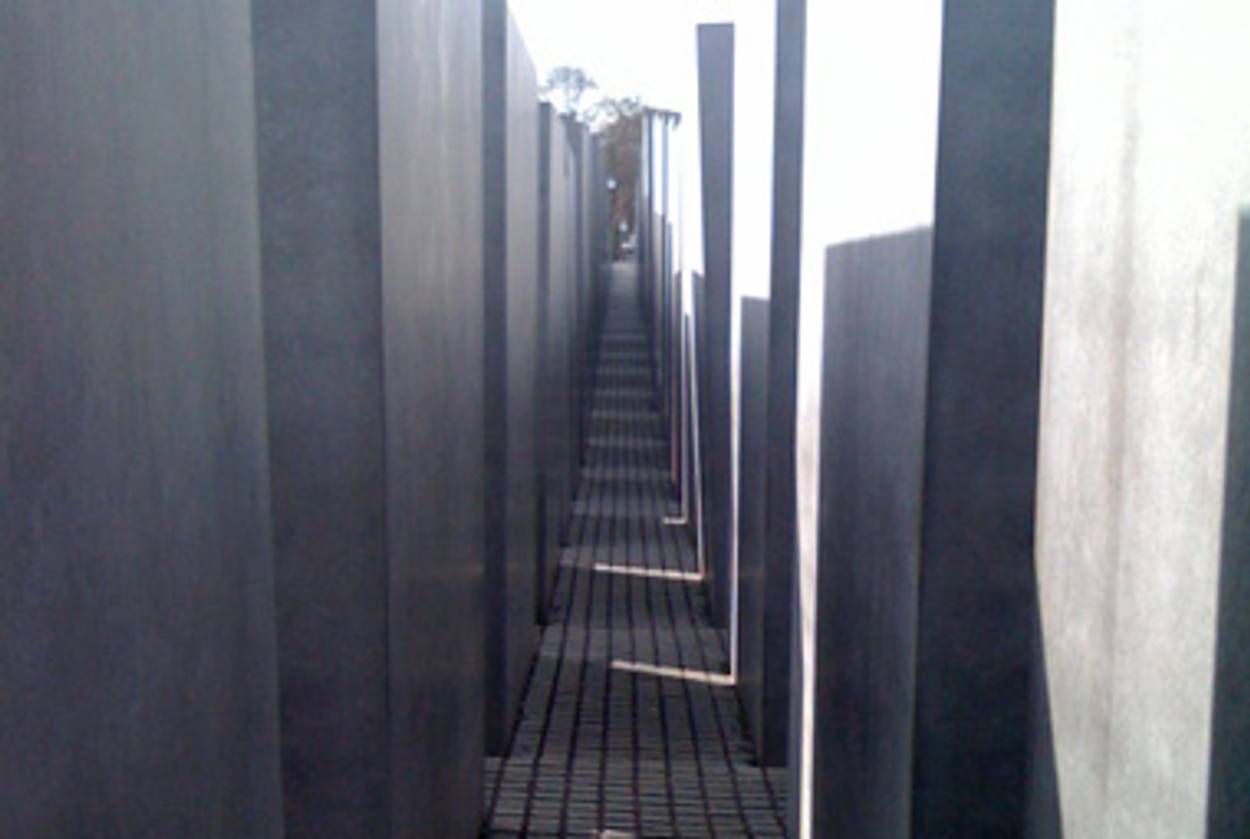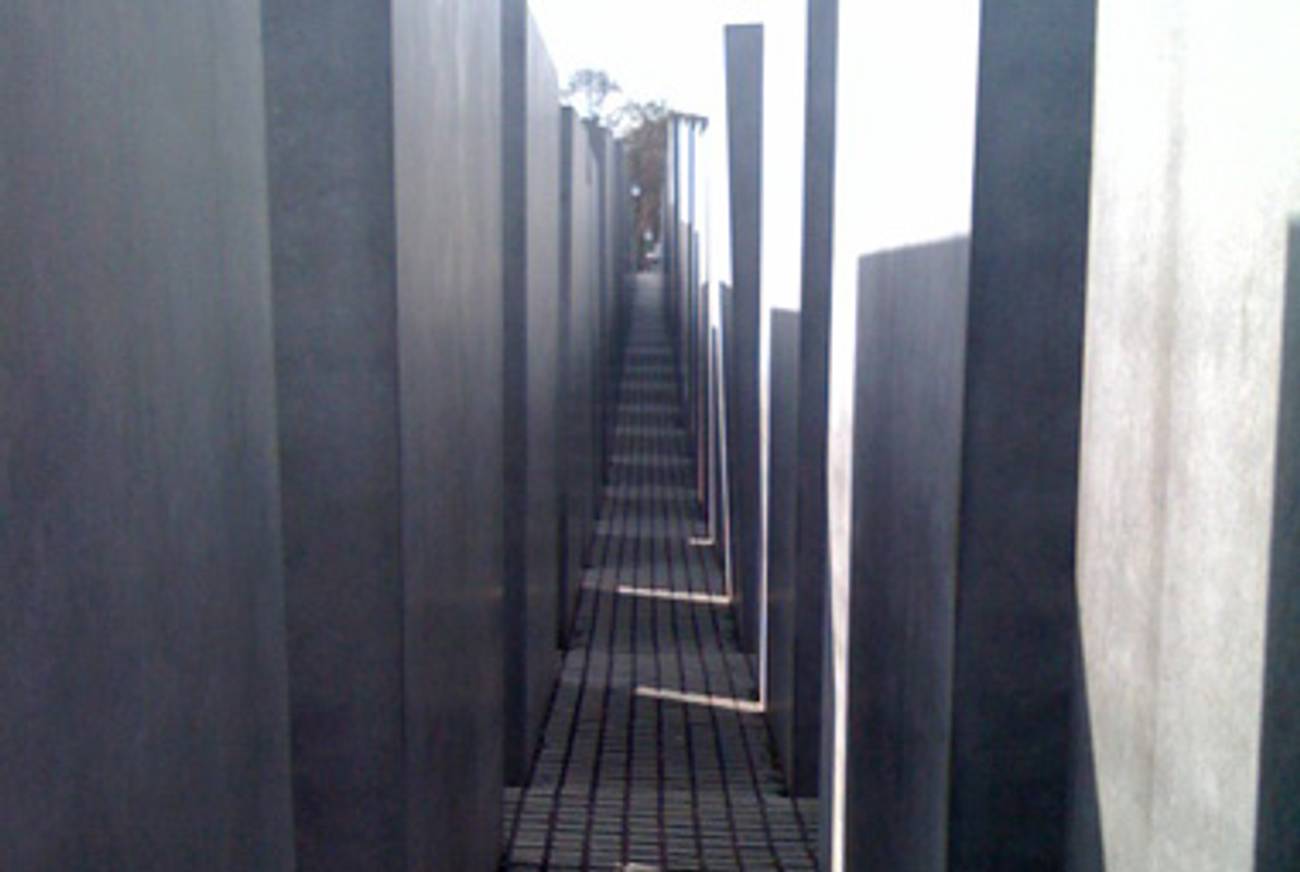Postcards From Berlin
Time hasn’t healed it, and the people aren’t helping




I was recently on vacation, and in the interest of claiming the whole thing as a tax write-off, I may as well write about it (kidding!). It seems most natural to write about Berlin, where I spent three days sightseeing, seeing people, and cutting an album (kidding again!). Berlin’s uniqueness has much to do with its Jewish experience and with the experience of the Jews of Europe who were murdered at the direction of residents of the city. Ich bin ein that?? Well, maybe.
Some cities paper over their history, whether by encasing an idealized version of itself in immortal amber (Paris) or constantly rebuiliding so that it is never more than six months of construction away from total modernity (I am told parts of Beijing are like this). Other cities may be said to be haunted by their pasts, the ghosts truly existing only in the minds of the beholders—a main tourist destination in Prague, which I also visited, is the crammed, surreal Jewish cemetery whose youngest corpses date to the 18th century.
But Berlin is scarred. The horrific wounds that history has slashed across the city (and which, in many cases—and as the Germans are at the front of the line to admit—Berlin invited upon itself) remain. A glass cone sits atop the Reichstag, a deliberately obvious reminder of the 1933 arson that enabled the Nazis to solidify their grip on the country’s steering wheel. Around the corner, in front of the Brandenburg Gate, a line of bricks traces the path of the wall that once divided the free city from the unfree one. And just around the corner from that (and pictured above), in the middle of Berlin’s Mitte, or central neighborhood, is the city’s (or one of the city’s) Holocaust Memorial. It is rows of endless gray slabs, which don’t reach your knees at the installation’s edges but tower above you in its middle. Official name: Memorial to the Murdered Jews of Europe.
There must be one of those indelibly German words for the blend of clear-eyed and ostentatious honesty and earnestness with which Berlin and Berliners acknowledge—more than acknowledge, because they are always the ones bringing it up—what their forefathers did to the Jews of Europe (which is to say, “murdered” them: They always use that word). Hitler is mentioned everywhere, even if, to avoid creating shrines for neo-Nazis, his picture is displayed nowhere. Berlin’s signs do not call it Kristallnacht: After all, that was lead Nazi propogandist Joseph Goebbels’s word for that horrific evening, a way of saying, in effect, that it was merely a “night of broken glass.” It is referred to in Berlin as Reichspogromnacht, or “the night of the pogrom that was sponsored by the government.” If the event in question were anything else, this would be some variation on the lady protesting too much. But, as I thought when noticing yet another memorial, you probably can’t have too many ways to remember the Shoah. I’ll find it difficult to forget, for example, the train tracks that carried the first transport of humans out of the posh (and, at the time, heavily Jewish) suburb just west of the city.
The Holocaust also plays a big, if not totally dominant, role at the city’s famed Jewish Museum. Two things stood out: The permanent exhibition, which skillfully told the history of the Jews generally through the specific, idiosyncratic history of German Jewry; and the Garden of Diaspora, a deliberately disorienting outdoor square featuring 49 pillars in rows and deliberately uneven ground, designed to induce the dizziness that Jews must have felt as they arrived on alien shores.
Many Germans, I was told repeatedly, dislike Berlin, even express a desire to disown it. This was true of the Nazis, of course—they hated its plain scenery, its cosmopolitanism, and, of course, its substantial Jewish population. But even nowadays, many see it as un-German, un-beautiful, and cooler-than-thou. Which is all probably true! Yet anyone looking for Berlin’s redemption would have to praise the way it has invited young people from around the world—but maybe especially Americans; and yes, American Jews—with its art scene, its nightlife, its diversity, its inexpensiveness, and its excitement. A recent Forward article captured this well, and although—the world being small—I ended up spending time with several of the very people featured in the piece, I suspect my experiences on evenings out in Kreuzberg and Neukölln would have confirmed the vibrant scene described by the article anyway. One night, we went to a bar in Friedrichshain, a working-class neighborhood of East Berlin turned typical gentrifying fantasy land, whose theme was Communist kitsch. Yes, that is a big picture of Marx. History here has been co-opted, tamed, and harnessed by the ironic perspective that time can provide. But there’s a big difference between ignoring history and doing what this bar does.
Later on in my vacation, I saw a memorial of a different kind in Paris. (“You Americans treat Europe like it was one big country,” a young French woman quipped when I related the many cities on my itinerary. This was in London.)
My French is all but non-existent, but basically: “STREET OF THE RIGHTEOUS: In memory of the Righteous who saved Jews during the Occupation.” Yes, it was all the fault of the Occupation, which was (by definition) something imposed from without: No French person had anything to do with the murdered Jews of France. That’s the French for you, and Paris, too.
At the same time, for all the crimes of collaboration, the Nazi occupation was the prime culprit in France, and everywhere else as well. No city on Earth has more to answer for than Berlin. But no city is more game.
Marc Tracy is a staff writer at The New Republic, and was previously a staff writer at Tablet. He tweets @marcatracy.